Watch: New Transportation Committee gets intro from SDOT, CM Kettle puts foot in mouth
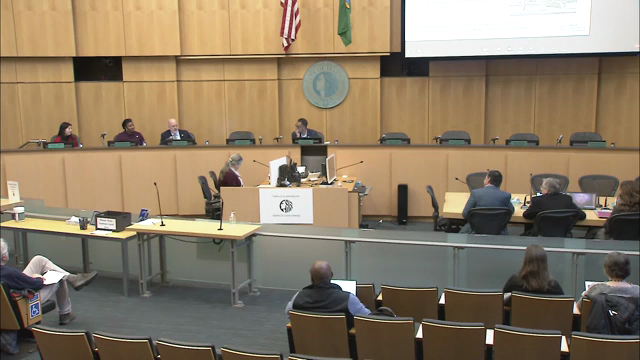 Watch below or on Seattle Channel.
Watch below or on Seattle Channel.Seattle's new City Council held its first Transportation Committee meeting Tuesday, and every member in attendance was a new Councilmember. The only returning Transportation Committee member is Dan Strauss (D6), but he was excused Tuesday because he was in Olympia on city business. Chair Rob Saka (D1), vice-chair Joy Hollingsworth (D3), and members Bob Kettle(D7) and Tanya Woo (interim citywide) were there to hear an introduction to SDOT's work from SDOT Director Greg Spotts.
The meeting was an opportunity to get a sense of the committee's early dynamics. Only Saka and Kettle spoke at any length from the dais about their transportation opinions. Councilmember Woo asked questions about community outreach and Sound Transit station siting, but did not pontificate. CM Kettle's bike lane misinformation ended up being the most notable takeaway from the committee's first meeting, unfortunately. More on that below.
Saka opened reiterating some things he told Seattle Bike Blog recently, namely that he has a heavy focus" on bridges and streets. Representing District 1, which includes West Seattle, one of my goals is to make sure no other community in Seattle experiences what we experienced with a protracted closure of a critical bridge," he said. I also want to focus on safety and comfort of pedestrians and making real tangible progress on our Vision Zero goals in part through a once-in-a-generation investment in new sidewalk infrastructure."
Before turning the mic over to Director Spotts, Saka also acknowledged the $1.2-$1.7 billion elephant in the room. I look forward to a spirited discussion about the size and direction of the upcoming transportation levy with you all and members of the public."
You can watch the full meeting via Seattle Channel and download SDOT's slides (PDF). The presentation starts at 13:30, and they paused at various points in the presentation to take questions from the Council around the 29:20, 50:15, and 1:106:00 marks.
As Chair, CM Saka set up the meeting as a chance for the very fresh committee to get an overview of SDOT's work as well as the kinds of duties the committee will be expected to complete. They also discussed the resources available at SDOT to help committee members if they have questions about various aspects of the sprawling, high-budget department.
CM Kettle, on the other hand, made a bit of a rough entrance. He reminded me of many community council meetings I have attended in my years of community reporting, which too often have one or two members who speak at length about topics they are not experts about rather than ask questions of the experts in attendance. This is mostly tolerated at the community council level, but the standard is higher on City Council.
Some of the things CM Kettle said were just sort of head-scratchers, like when he cautioned that while he does support some safety projects, There are other streets like I-5 where we should not be doing anything." I-5 is a state facility and not under the purview of SDOT or the City Council Transportation Committee. He also spoke highly of Mercer Street's so-called Intelligent Transportation System," which has been much maligned for the ways it prioritizes car traffic over walking and biking safety and crossing times while also failing consistently at keeping bike lanes and crosswalks clear of stopped car traffic. I'm also not sure I've ever heard a car driver have anything nice to say about the street. CM Kettle said he encourages SDOT to try to leverage those technologies to improve service" on congested streets. I doubt many regular users of Mercer Street, regardless of mode, are going to agree with his take here.
He also referred to the Magnolia Bridge as queen of all bridges," which is a phrase I have not heard before. The Magnolia Bridge was built back when it crossed over water, but the area under it has since been filled in and is part of the port. It is a freeway-style bridge connecting to a low-density part of the city, and it's miserable to use if you're outside a car. She's not my queen, anyway.
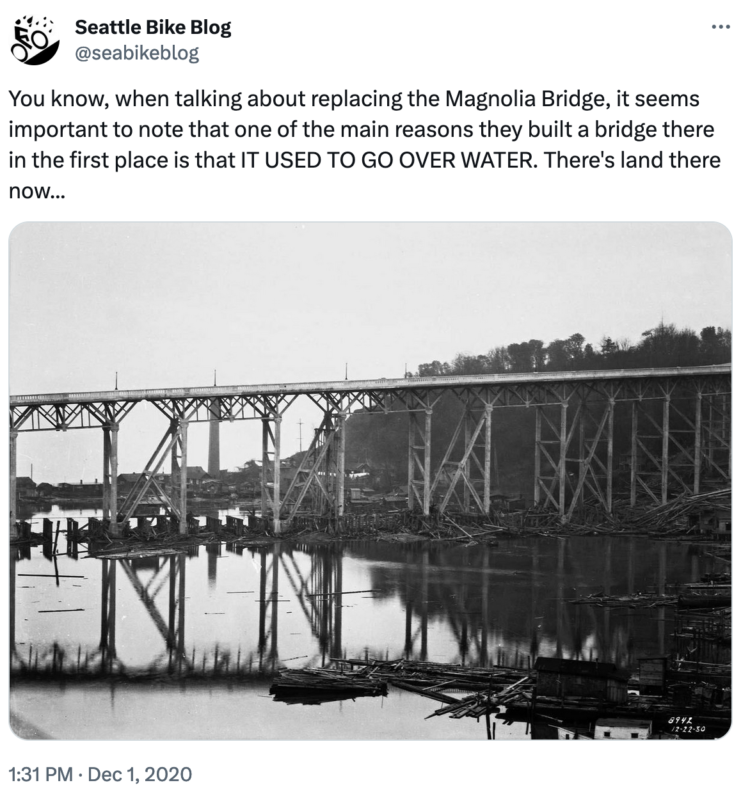
But the part where he really put his foot in his mouth was when he decided to go on a rant about how bike lanes are becoming a public safety concern."
One thing I've learned is they're becoming a public safety concern," he said to a panel of transportation and vision zero professionals. It goes to pedestrian safety primarily. Downtown, Belltown, they go fast. If you have somebody my size and that fast, that's a lot...it's physics. If you have an elderly person who's loving in a condo or apartment building in downtown, Belltown, that becomes a big problem. And that's something that's growing."
There is no evidence that I'm aware of that pedestrian safety issues around bike lanes is, as the councilmember stated as fact, growing. The city is seeing a very disturbing trend in pedestrian deaths and injuries, and on his first day on the job Director Spotts (the guy giving the presentation to the committee), tasked SDOT with conducting a study to find out why. It's available online, but to roughly summarize: Deaths are happening on wide streets that prioritize moving cars above the safety of people walking. Because as for physics," well, a car weighs a lot more than a person on a bicycle. Here are some charts from the report:
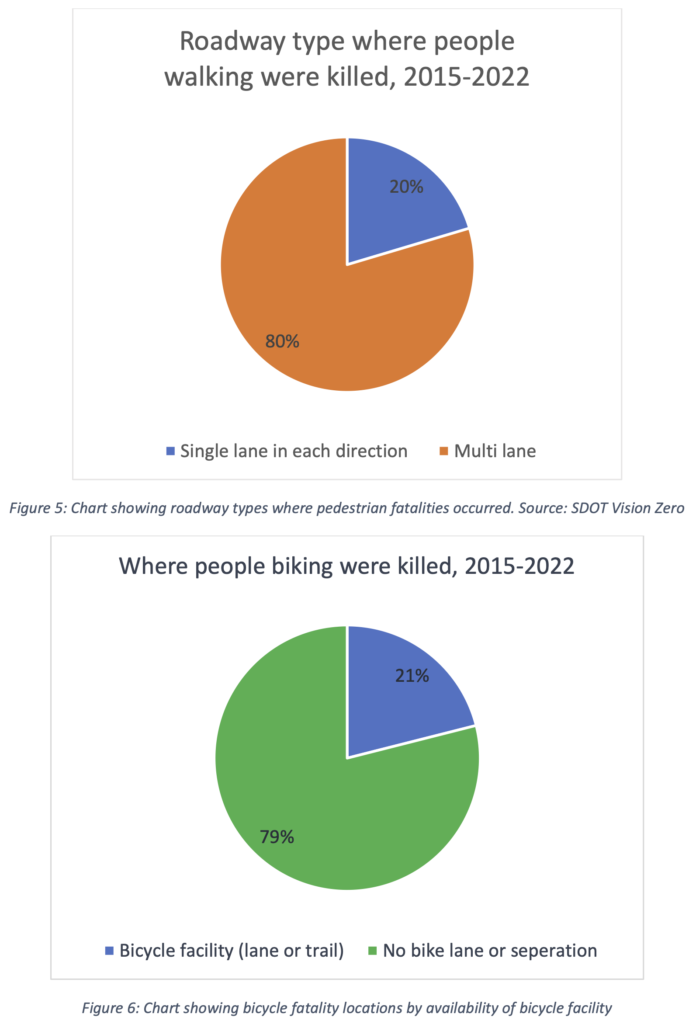
Councilmember Kettle kept digging deeper, saying in a confusing word soup that the Westlake bikeway is also a growing issue."
And tied to this too with the bike lanes, again, if you're a pedestrian and you're trying to get to the Starbucks in the AGC building, and you have those protected lanes, and again, with these mobility solutions with these scooters and the like, they go fast. And this pedestrian issue in terms of trying to cross the bike lane to get from one side of Westlake to the other side, to the businesses whether it's start with Starbucks at AGC or go up to China Harbor. That is a growing issue from a public safety, pedestrian safety as it ties into your slide pieces."
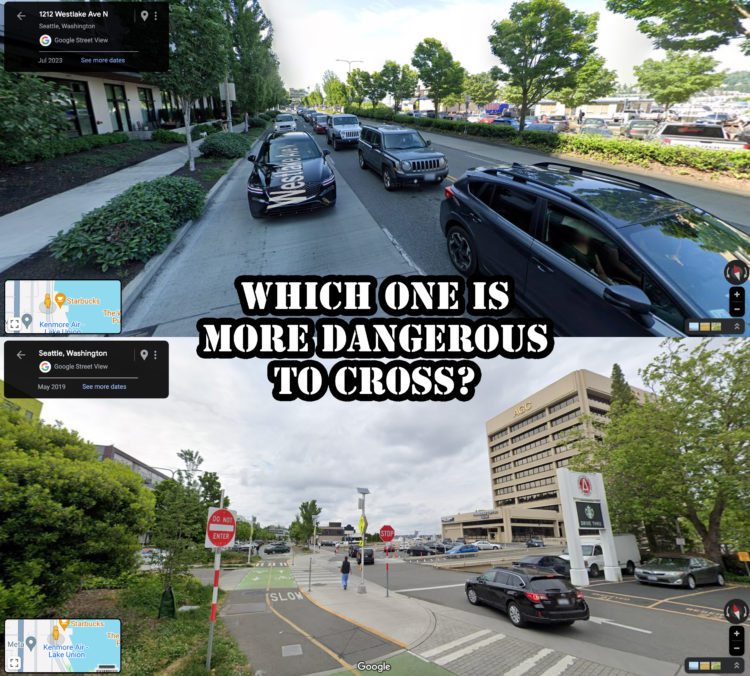
Where to begin? For people crossing from one side of Westlake to the other side," the four lanes of fast traffic with few safe crosswalks are much more dangerous than the bike lane. The main sidewalk there is to the east of the bikeway, so sidewalk users do not need to cross the bikeway to get to businesses. People who park in the public parking lot do need to cross the bikeway, but this was a design decision made to minimize the conflict points between people driving and people biking. Since opening nearly 8 years ago, the Westlake bikeway has become one of the city's most popular and successful bike routes.
The Vision Zero report shows that no point near the Westlake bikeway cracks the top 20 most dangerous intersections for pedestrians in CM Kettle's District 7. You what street appears multiple times? Mercer Street.
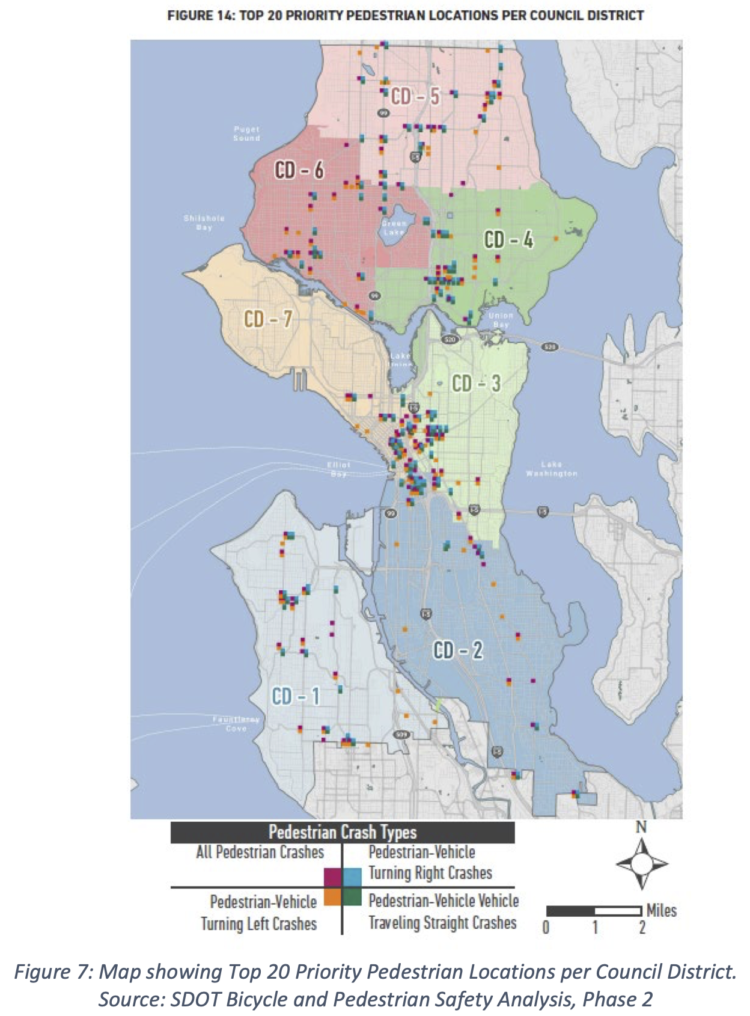
I know I'm coming off harsh here, but listening to him say these things during the Transportation Committee really got to me. It's infuriating to report about people whose lives have been ended or forever altered by traffic collisions, to read reports from our city's transportation experts outlining what we can do to prevent such tragedies, and then to listen to someone elected to serve our city tell those same experts that he knows the real problem is bike lanes. It's unacceptable.
This isn't a community council, it's the Seattle City Council, the body tasked with spending our taxes and setting our policies. We need this body to be working together on the monumental task of reducing traffic deaths and injuries. Protected bike lanes have consistently proven to be one of the best tools we have to improve safety for all road users, including people in cars and people on foot. They calm traffic speeds and dramatically reduce the crossing distances for crosswalks, reducing to time people are exposed to car traffic collisions while also slowing the speeds of any collisions that do happen. As was outlined in SDOT's presentation to the committee, SDOT staff is available at any time to help councilmembers get answers to any questions they have. The public's expectation is that councilmembers will have sought out those resources before making factual claims from the dais. And if they don't have research prepared, then they have the opportunity to ask the experts in front of them.
Despite these detours into bike lane misinformation, CM Kettle was not entirely against bike projects. He noted support for safe routes to school projects and praised the Thomas Street project, which will include protected bike lanes as well as the city's first complete protected intersection.
So, yes, this is a harsh post about a brand new councilmember. My hope is that CM Kettle takes it as some tough advice from a longtime Council observer and reporter, because this lesson will apply to other meetings and topics as well.